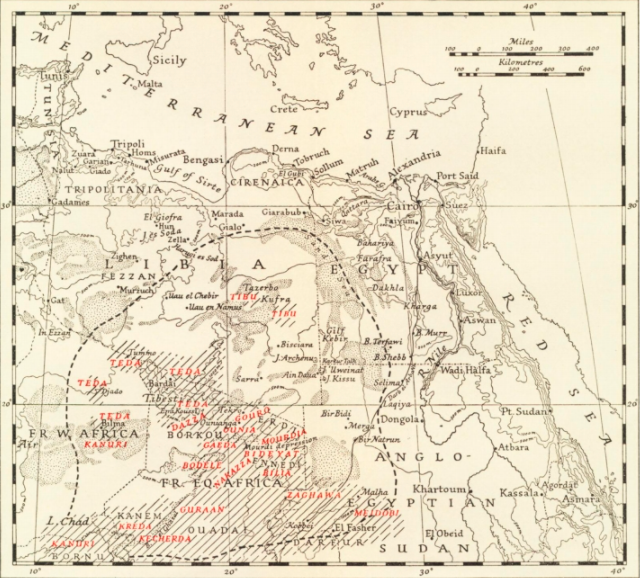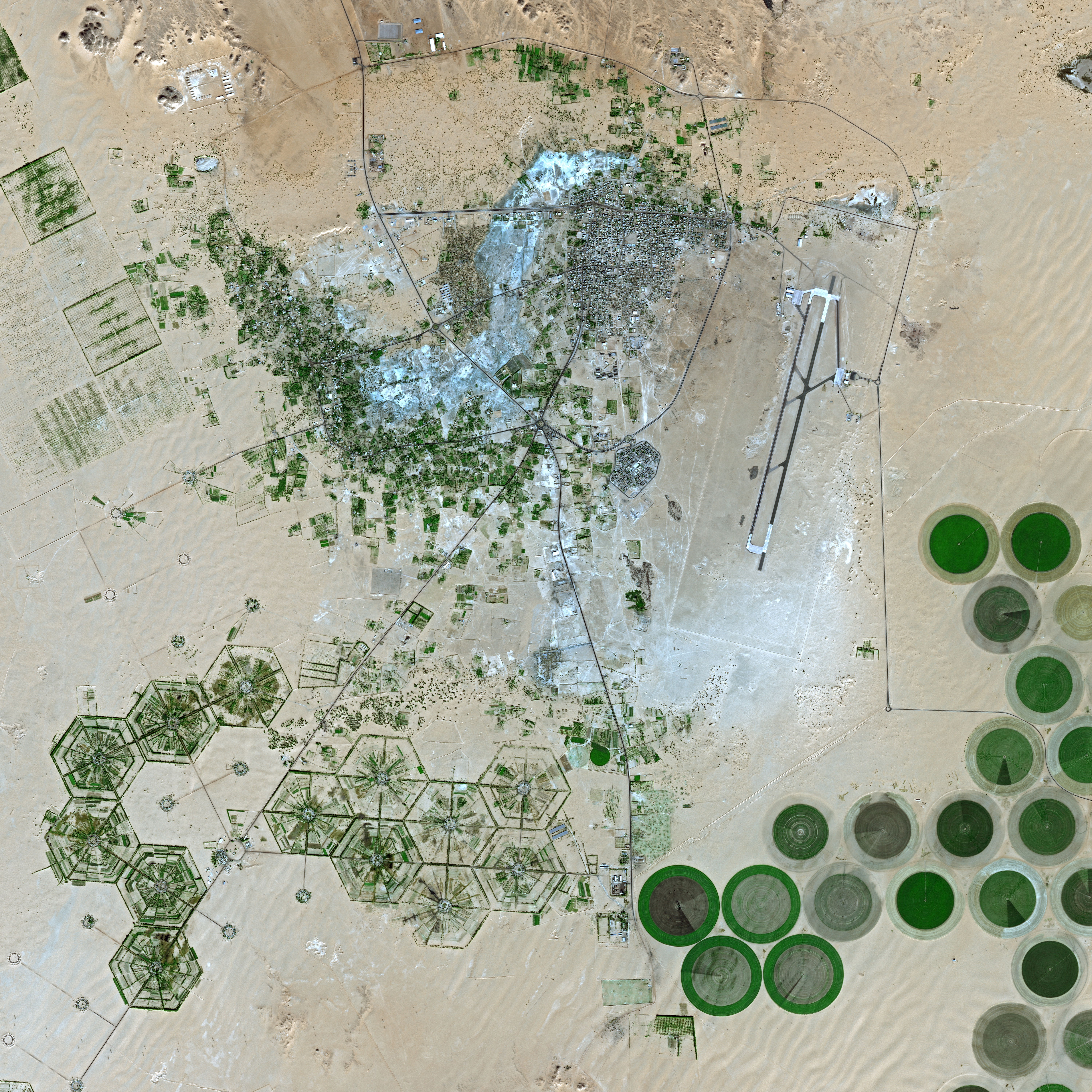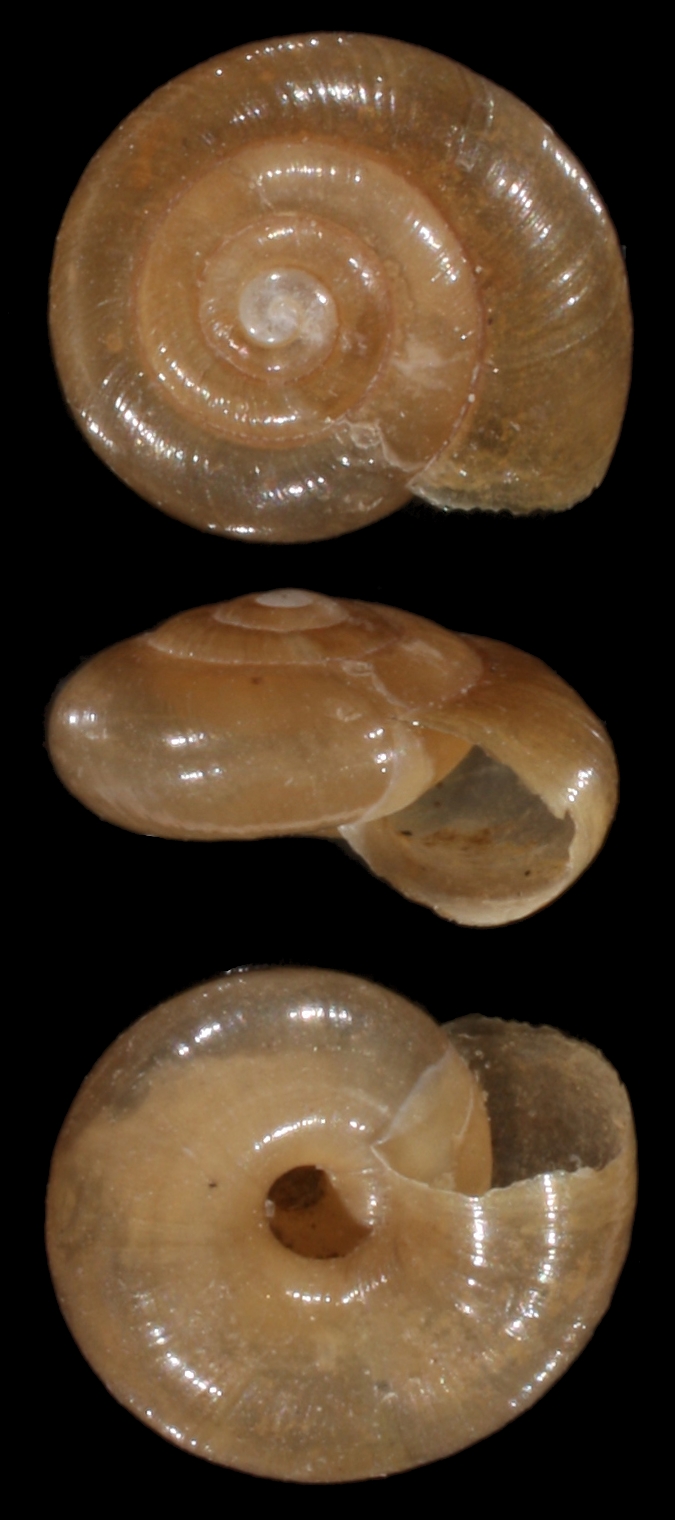|
Tarso Emi Chi
Tarso Emi Chi (tarso: "gentle mountain, high plateau"; emi: "large mountain"; named by the Toubou) is a volcano in Chad. Tarso Emi Chi is part of the Tibesti Mountains, a group of volcanic mountains that cover a surface area of and reach an elevation of . The mountains consist of both a Precambrian crystalline rocks and volcanic rocks. The volcano consists of a lava plateau that originated in a number of vents, which form a number of volcanic cones. It covers a surface of about in the northeastern Tibesti mountains, with a steep drop towards the east and the north and gentler slopes in the south and west. Summits in the volcano include Boubou, Chebedo, Godoon, Kazena Lulli, Kégueur Tédi, Mouskorbé, Tarso Adar, Tarso Aozi, Tarso Chididemi, Tarso Goziydi, Tarso Kozen and Tarso Toudougou. Of these Mouskorbé reaches a height of . Tarso Emi Chi has erupted a number of volcanic series such as the "black series" and the "white series", which consist of basaltic andesite, rhyolite a ... [...More Info...] [...Related Items...] OR: [Wikipedia] [Google] [Baidu] |
Toubou
The Toubou or Tubu (from Old Tebu, meaning "rock people") are an ethnic group native to the Tibesti Mountains that inhabit the central Sahara in northern Chad, southern Libya and northeastern Niger. They live either as herders and nomads or as farmers near oases. Their society is clan-based, with each clan having certain oases, pastures and wells. The Toubou are generally divided into two closely related groups: the Teda (or Téda, Toda) and the Dazagara (or Dazzaga, Dazagada, Daza). They are believed to share a common origin and speak the Tebu languages, which are from the Saharan branch of the Nilo-Saharan language family. Tebu is divided further into two closely related languages, called ''Tedaga'' (Téda Toubou) and ''Dazaga'' (Dazaga Gouran). Of the two groups, the Daza, found to the south of the Teda, are more numerous. The Toubou people are also referred to as the Tabu, Tebu, Tebou, Tibu, Tibbu, Toda, Todga, Todaga, Tubu, Tuda, Tudaga, or Gorane people. The Dazaga are ... [...More Info...] [...Related Items...] OR: [Wikipedia] [Google] [Baidu] |
Nivation
Nivation is the set of geomorphic processes associated with snow patches. The primary processes are mass wasting and the freeze and thaw cycle, in which fallen snow gets compacted into firn or névé. The importance of the processes covered by the term ''nivation'' with regard to the development of periglacial landscapes has been questioned by scholars, and the use of the term is discouraged. ''Nivation'' has come to include various subprocesses related to snow patches which may be immobile or semi-permanent. These sub-processes include erosion (if any) or initiation of erosion, weathering, and meltwater flow from beneath the snow patch. Weathered particles are moved downslope by creep, solifluction Solifluction is a collective name for gradual processes in which a mass moves down a slope ("mass wasting") related to freeze-thaw activity. This is the standard modern meaning of solifluction, which differs from the original meaning given to it ... and rill wash. Over time, thi ... [...More Info...] [...Related Items...] OR: [Wikipedia] [Google] [Baidu] |
Acacia
''Acacia'', commonly known as the wattles or acacias, is a large genus of shrubs and trees in the subfamily Mimosoideae of the pea family Fabaceae. Initially, it comprised a group of plant species native to Africa and Australasia. The genus name is New Latin, borrowed from the Greek (), a term used by Dioscorides for a preparation extracted from the leaves and fruit pods of ''Vachellia nilotica'', the original type of the genus. In his ''Pinax'' (1623), Gaspard Bauhin mentioned the Greek from Dioscorides as the origin of the Latin name. In the early 2000s it had become evident that the genus as it stood was not monophyletic and that several divergent lineages needed to be placed in separate genera. It turned out that one lineage comprising over 900 species mainly native to Australia, New Guinea, and Indonesia was not closely related to the much smaller group of African lineage that contained ''A. nilotica''—the type species. This meant that the Australasian lineage (by ... [...More Info...] [...Related Items...] OR: [Wikipedia] [Google] [Baidu] |
Drainage Basin
A drainage basin is an area of land where all flowing surface water converges to a single point, such as a river mouth, or flows into another body of water, such as a lake or ocean. A basin is separated from adjacent basins by a perimeter, the '' drainage divide'', made up of a succession of elevated features, such as ridges and hills. A basin may consist of smaller basins that merge at river confluences, forming a hierarchical pattern. Other terms for a drainage basin are catchment area, catchment basin, drainage area, river basin, water basin, and impluvium. In North America, they are commonly called a watershed, though in other English-speaking places, "watershed" is used only in its original sense, that of a drainage divide. In a closed drainage basin, or endorheic basin, the water converges to a single point inside the basin, known as a sink, which may be a permanent lake, a dry lake, or a point where surface water is lost underground. Drainage basins are similar ... [...More Info...] [...Related Items...] OR: [Wikipedia] [Google] [Baidu] |
Kufrah Paleoriver
Kufra () is a basinBertarelli (1929), p. 514. and oasis group in the Kufra District of southeastern Cyrenaica in Libya. At the end of nineteenth century Kufra became the centre and holy place of the Senussi order. It also played a minor role in the Western Desert Campaign of World War II. It is located in a particularly isolated area, not only because it is in the middle of the Sahara Desert but also because it is surrounded on three sides by depressions which make it dominate the passage in east-west land traffic across the desert. For the colonial Italians, it was also important as a station on the north-south air route to Italian East Africa. These factors, along with Kufra's dominance of the southeastern Cyrenaica region of Libya, highlight the strategic importance of the oasis and why it was a point of conflict during World War II. Etymology The folk etymology associaters the word Kufra as coming from the Arabic word kafir, the Arabic term for non-Muslims (often transl ... [...More Info...] [...Related Items...] OR: [Wikipedia] [Google] [Baidu] |
Reed (plant)
Reed is a common name for several tall, grass-like plants of wetlands. Varieties They are all members of the order Poales (in the modern, expanded circumscription), and include: In the grass family, Poaceae * Common reed (''Phragmites australis''), the original species named reed * Giant reed (''Arundo donax''), used for making reeds for musical instruments * Burma reed (''Neyraudia reynaudiana'') * Reed canary-grass (''Phalaris arundinacea'') * Reed sweet-grass (''Glyceria maxima'') * Small-reed (''Calamagrostis'' species) In the sedge family, Cyperaceae * Paper reed or papyrus ('' Cyperus papyrus''), the source of the Ancient Egyptian writing material, also used for making boats In the family Typhaceae * Bur-reed (''Sparganium'' species) * Reed-mace (''Typha'' species), also called bulrush or cattail In the family Restionaceae * Cape thatching reed ('' Elegia tectorum''), a restio originating from the South-western Cape, South Africa. * Thatching reed (''Thamnochortus ins ... [...More Info...] [...Related Items...] OR: [Wikipedia] [Google] [Baidu] |
Grass
Poaceae () or Gramineae () is a large and nearly ubiquitous family of monocotyledonous flowering plants commonly known as grasses. It includes the cereal grasses, bamboos and the grasses of natural grassland and species cultivated in lawns and pasture. The latter are commonly referred to collectively as grass. With around 780 genera and around 12,000 species, the Poaceae is the fifth-largest plant family, following the Asteraceae, Orchidaceae, Fabaceae and Rubiaceae. The Poaceae are the most economically important plant family, providing staple foods from domesticated cereal crops such as maize, wheat, rice, barley, and millet as well as feed for meat-producing animals. They provide, through direct human consumption, just over one-half (51%) of all dietary energy; rice provides 20%, wheat supplies 20%, maize (corn) 5.5%, and other grains 6%. Some members of the Poaceae are used as building materials (bamboo, thatch, and straw); others can provide a source of biofuel, ... [...More Info...] [...Related Items...] OR: [Wikipedia] [Google] [Baidu] |
Zonitoides Nitidus
''Zonitoides nitidus'' (sometimes ''Zonitoides nitida'') is a species of small, air-breathing land snail, a terrestrial pulmonate gastropod mollusc in the family Gastrodontidae. ''Zonitoides nitidus'' is the type species of the genus '' Zonitoides''. Distribution The distribution of ''Zonitoides nitidus'' includes the Holarctic zone. It is found almost all over Europe except the southernmost regions: * Czech Republic - least concern (LC) * Netherlands * Russia - Sverdlovsk oblast * UkraineBalashov I. & Gural-Sverlova N. 2012. An annotated checklist of the terrestrial molluscs of Ukraine. ''Journal of Conchology''. 41 (1): 91-109. * Slovakia * Great Britain - north British highland zones and not in north Scotland. In some regions in Britain the species has declined due to drainage. * Ireland * Hebrides * Orkney * Shetland * rare in northern Greece * Canada The non-indigenous distribution of this species includes: * introduced to Menorca Description The shell is reddish brown ... [...More Info...] [...Related Items...] OR: [Wikipedia] [Google] [Baidu] |
Succinea Pfeifferi
''Oxyloma elegans'' is a species of small European land snail, a terrestrial pulmonate gastropod mollusk belonging to the family Succineidae, the amber snails. Description The shell usually has fewer than 3 whorls. The body whorl is very large and the spire is short. The shell is yellowish amber coloured with irregular radial growth lines. The width of the shell is 6–8 mm. The height of the shell is 9–17 mm (up to 20 mm). Genitalia differences separate ''Oxyloma elegans'' from ''Oxyloma sarsii'' and the genus ''Succinea''. The epiphallus is slightly curved and inside a short penis prolongation distance between penis and the pedunculus is very short.Species summary for ''Oxyloma elegans'' [...More Info...] [...Related Items...] OR: [Wikipedia] [Google] [Baidu] |
Euconulus Fulvus
''Euconulus fulvus'' is a species of very small, air-breathing land snail, a terrestrial pulmonate gastropod mollusk in the family Euconulidae, the hive snails. Description For terms see gastropod shell The 2.0-2.5 x 2.8-3.5 mm shell is broader than high. The colour is yellowish brown. The shell surface on the upper side is rather pale, the lower side is rather silky and smooth. There is no umbilicus and the last whorl with a trace of a keel. Distribution This species occurs in countries and islands including: * Czech Republic * UkraineBalashov I. & Gural-Sverlova N. 2012. An annotated checklist of the terrestrial molluscs of Ukraine. ''Journal of Conchology''. 41 (1): 91-109. * Great Britain * Ireland * and other areas Habitat ''Euconulus fulvus'' occurs mainly in coniferous and deciduous forests, where it can be found in the litter or under deadwood pieces.Wiese, V. (2014). ''Die Landschnecken Deutschlands: Finden - Erkennen – Bestimmen.'' Quelle & Meyer: Wiebelsheim ... [...More Info...] [...Related Items...] OR: [Wikipedia] [Google] [Baidu] |
Snail
A snail is, in loose terms, a shelled gastropod. The name is most often applied to land snails, terrestrial pulmonate gastropod molluscs. However, the common name ''snail'' is also used for most of the members of the molluscan class Gastropoda that have a coiled shell that is large enough for the animal to retract completely into. When the word "snail" is used in this most general sense, it includes not just land snails but also numerous species of sea snails and freshwater snails. Gastropods that naturally lack a shell, or have only an internal shell, are mostly called '' slugs'', and land snails that have only a very small shell (that they cannot retract into) are often called ''semi-slugs''. Snails have considerable human relevance, including as food items, as pests, and as vectors of disease, and their shells are used as decorative objects and are incorporated into jewelry. The snail has also had some cultural significance, tending to be associated with lethargy. The sn ... [...More Info...] [...Related Items...] OR: [Wikipedia] [Google] [Baidu] |





